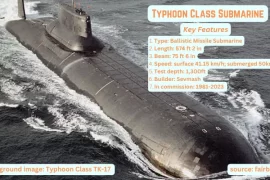The BRICS alliance, comprised of five member nations, has recently embarked on a significant expansion by extending invitations to six additional countries. This move has ignited debates and discussions, with opinions divided on whether a larger BRICS remains true to its original purpose. As these six new countries are welcomed into the fold, questions arise about whether the world’s foremost emerging economies are strengthening their unity or potentially diluting their collective influence. In this exploration, we delve deeper into the recent BRICS expansion.
A brief history of BRICS
BRICS, an acronym for Brazil, Russia, India, China, and South Africa, emerged as an economic and political bloc in 2009. Originally dubbed “BRIC” before South Africa’s inclusion in 2010, it represents a group of influential emerging economies. BRICS was established to enhance cooperation on various fronts, including economics, geopolitics, and global governance.
The organization aims to address shared concerns and advocate for the interests of developing nations. It was also built to be a counterweight to Western
hegemony in trade and finance. The Group has already founded the New Development Bank as an alternative to the Western-dominated IMF
and World Bank. Over the years, BRICS has held annual summits and fostered closer ties in trade, investment, and technology.
Despite occasional differences among its members, BRICS continues to assert itself as a significant player on the global stage, challenging the dominance of Western powers and promoting a multipolar world order. Its expansion in 2024 marks a new chapter in its evolution.
In 2024, Russia will host the 16th BRICS Summit as the chair. The Summit will take place in Kazan, Russia.
Who coined the idea of BRIC?
The term “BRIC” was coined by Jim O’Neill, an economist and former chairman of Goldman Sachs Asset Management, in a 2001 research paper titled “Building Better Global Economic BRICs.” O’Neill used this acronym to refer to the four major emerging economies at the time: Brazil, Russia, India, and China. This concept gained significant attention and became a key reference point in discussions about the shifting global economic landscape.
The purpose of BRICS
BRICS highlights some core principles that define the alliance. These are mutual respect, sovereign equality, solidarity, democracy, openness, inclusiveness, collaborative strength, and consensus. As the alliance commemorates 15 years of BRICS Summits, it reinforces the framework of mutually beneficial cooperation across three pivotal pillars: political and security cooperation, economic and financial collaboration, and cultural and people-to-people engagement. The overarching goal is to advance their strategic partnership for the betterment of their respective populations. This entails actively promoting peace, advocating for a more equitable international order, revitalizing and reforming the multilateral system, championing sustainable development, and fostering inclusive global growth.
Why did BRICS expand?
The primary motivation for including South Africa in 2010 was to broaden the bloc’s presence in Africa. This expansion enabled BRICS to more effectively tackle African-related matters and facilitate broader-scale economic and political collaboration. Additionally, South Africa has been a leading advocate for reforms in Western-dominated multilateral institutions, such as the World Bank and UN Security Council.
Amidst the backdrop of the ongoing Ukraine War, escalating China-US tensions, and global economic uncertainties, BRICS’ appeal has reached unprecedented heights.
Countries like Iran find significant value in joining groups like BRICS due to their perception of unfair treatment within international institutions, often dominated by Western nations.
Additionally, many African countries, excluding Nigeria and Kenya, are increasingly gravitating towards the East, making BRICS an appealing and potentially rewarding platform for them.
With over 40 countries expressing interest and 23 formally applying for membership, the bloc’s allure is evident.
Notably, Russia and China are keen to use the BRICS platform as an institutional counterweight to the Western hegemony. They want to expand BRICS membership as a means to extend their sphere of influence, given the mounting containment efforts led by Western countries, primarily the United States. China has already pointed to the threat of a new Cold War with the United States as one of the reasons for BRICS expansion.
Initially, India and Brazil exhibited hesitancy towards BRICS expansion. However, all five members eventually reached a consensus on the guiding principles, standards, criteria, and procedures for this process, as unveiled in the Johannesburg II Declaration (2023). According to the Declaration, the Foreign Ministers of these nations will further refine the BRICS partner country model. They will also compile a list of potential partner countries, with a report to be presented at the next Summit.
Who are the new members of BRICS [2023]?
Starting on January 1, 2024, Argentina, Egypt, Ethiopia, Iran, Saudi Arabia, and the United Arab Emirates will officially become full-fledged members of BRICS.
BRICS Expansion: Opportunities
At present, the BRICS nations collectively represent more than 42% of the world’s population, cover 26% of the planet’s land area, contribute to 26% of the global GDP, and account for 18% of worldwide trade. With their expansion, these proportions will increase significantly: their share of the world’s land area will rise to 32%, their combined population will reach 47%, their economic aggregate will expand to 29%, and their total trade in goods will grow to encompass 21% of the global totals.
This expansion will undoubtedly enhance both the economic and political influence of BRICS. Of significant note, the Western alliances, such as G7 and NATO, will no longer be able to sideline BRICS. BRICS members will increasingly contribute to shaping the global order, which has hitherto been dominated by Western nations. The emergence of a multipolar world holds genuine potential.
De-dollarization and increased use of local currencies through BRICS expansion
The BRICS members have been actively pursuing their de-dollarization efforts for quite some time. There was widespread speculation that an innovative financial arrangement introducing a new currency might emerge during the 15th annual summit held in South Africa on August 22, 2023. Nevertheless, the Summit declaration conspicuously omitted any mention of a consensus regarding the creation of a new currency. Instead, the Declaration emphasized the significance of promoting the use of local currencies in international trade and financial transactions among BRICS nations and their trade partners. Additionally, it underscored the need to enhance correspondent banking networks among BRICS countries and facilitate settlements in local currencies. As BRICS continues to grow, the potential for trade in local currencies will also expand. For instance, the United Arab Emirates is already engaged in bilateral trade with India using their own respective currencies.
BRICS Expansion: Challenges
BRICS has consistently been a diverse coalition, with member countries varying in their economic, political, and ideological perspectives. The inclusion of new members, encompassing a range as vast as ideological adversaries like Saudi Arabia and Iran, wealthy nations like the UAE, and economically challenged countries like Ethiopia with a GDP per capita below $1,000, will undoubtedly intensify the challenge.
BRICS Consensus Challenge
Presently, BRICS operates under a decision-making process that necessitates unanimous agreement among all member countries. This model has encountered challenges as the interests of all members do not always align. Two prominent examples include the proposal for a common BRICS currency and the expansion of BRICS membership.
In the former case, the five members failed to reach a consensus. There were expectations of a new currency agreement at this year’s Summit. In the latter case, expansion plans faced last-minute negotiation hurdles. Unless the decision-making model undergoes a revision, the challenge of reaching a consensus on critical issues will likely intensify with BRICS’ expansion.








